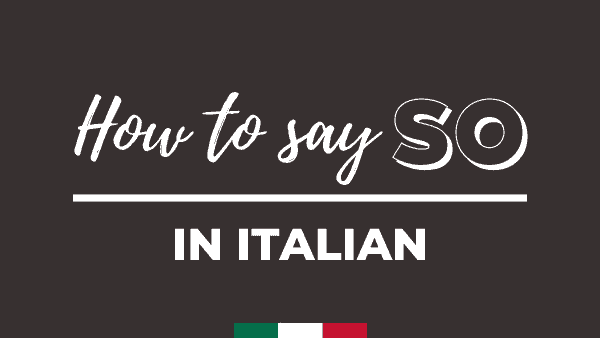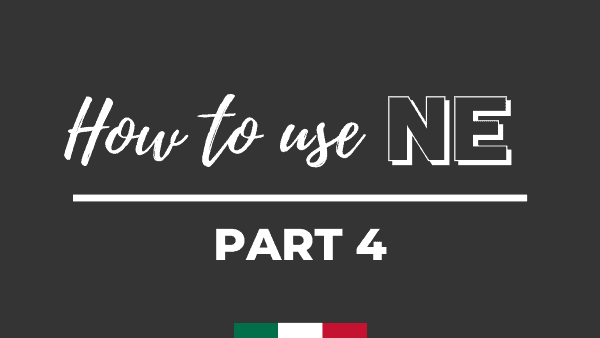When do I use BENE vs BUONO?
Phil asks: “When do I use BENE and when do I use BUONO? Or… how can I get this right?“
Getting confused between BENE and BUONO?
You shouldn't! 😉
BENE means WELL, while BUONO means GOOD.
That is, BENE/WELL are adverbs, while BUONO/GOOD are adjectives.
If you know how to use them right in English you should be able to use them right in Italian (in most cases!).
Download the PDF
No email required
ADVERBS alter a verb, that is, they tell us how much/little of the verb you are doing:
▷ SOME EXAMPLES:
IO PARLO MALE ITALIANO
I speak Italian badly (poorly)
IO CUCINO MOLTO MALE
I cook really badly
STO MALE OGGI
I’m unwell today
ADJECTIVES alter a noun, that is, they add qualities to the stuff we're talking about. They describe stuff.
THIS RED CAR IS FAST
THE CAR IS RED AND FAST
MY FAST CAR IS RED
In all these cases RED, FAST and MY are adjectives of CAR.
How about BUONO?
BUONO is an adjective. It has several possible translation into English. The most common are:
- Good tasting
- Well behaved
- Good quality
We do not use BUONO to describe the artistic value of something (like a film, a painting, or a book). We use BELLO:
QUESTO FILM É MOLTO BELLO
This movie is very good.
We also do not use BUONO to describe someone in relation to their performance (a musician, a student, a child, a dog). We use BRAVO.
I MIEI STUDENTI SONO TUTTI MOLTO BRAVI
All of my students are very good.
join our italian community
- Access a ton of content on this website
- Weekly Digest with a ton of Italian lessons, videos & facts!
- Invitation to Live Q&A Lessons with Manu
- Invitation to exclusive Webinars, Live Lessons & Games
- Coupons, Discounts & Specials for our Premium Italian Courses
Something you must remember about adjectives
In Italian adjectives usually FOLLOW the noun they are describing AND they reflect the GENDER and NUMBER of such noun.
So, if an adjective is referring to a singular masculine noun, then the advective will be singular and masculine.
UN PANINO BUONO
A good sandwich
If an adjective is referring to a singular feminine noun, then the advective will be singular and feminine.
UNA PIZZA BUONA
A good pizza
If an adjective is referring to a plural masculine noun, then the advective will be plural and masculine.
DUE PANINI BUONI
Two good sandwiches
Finally, if an adjective is referring to a plural feminine noun, then the advective will be plural and feminine.
DUE PIZZE BUONE
Two good pizzas
Adverbs NEVER change in gender and number. It's actually impossible!
▷ SOME EXAMPLES
IL MIO CANE È BUONO
My dog is good (well behaved)
QUESTA PIZZA È MOLTO BUONA
This pizza is really good (tasty)
I TUOI BISCOTTI SONO BUONISSIMI
Your cookies are very good (delicious)
Here we could not be using BENE, since what we are trying to do is describe the DOG, the PIZZA and the COOKIES.
To do that we need an ADJECTIVE.
It would make no sense to say “this pizza is very well”, right?
That's exactly what you'd be saying if you said “questa pizza è molto bene”.
Learn Italian to Fluency
- The program you've been dreaming of is here
- Better than having a private tutor
- In-Depth Italian lessons for complete clarity
- Extensive pratice opportunities
- Access to our community - you are never alone!
- A true learning experience to Italian Fluency
Some final TIPS
BENE (and other adverbs) go right after the verb
BUONO (and other adjectives) go right after the nouns
BUT
sometimes the following adjectives are used before the noun, just to confuse us! And BUONO is one of them! So don't panic if you ever see BUONO before the noun!
BUONO
UNA BUONA OCCASIONE
A good deal
BELLO
UNA BELLA OPPORTUNITÀ
A good opportunity
GRANDE
UNA GRANDE FESTA
A big party
BRAVO
UN BRAVO RAGAZZO
A good boy
Download the PDF
No email required



